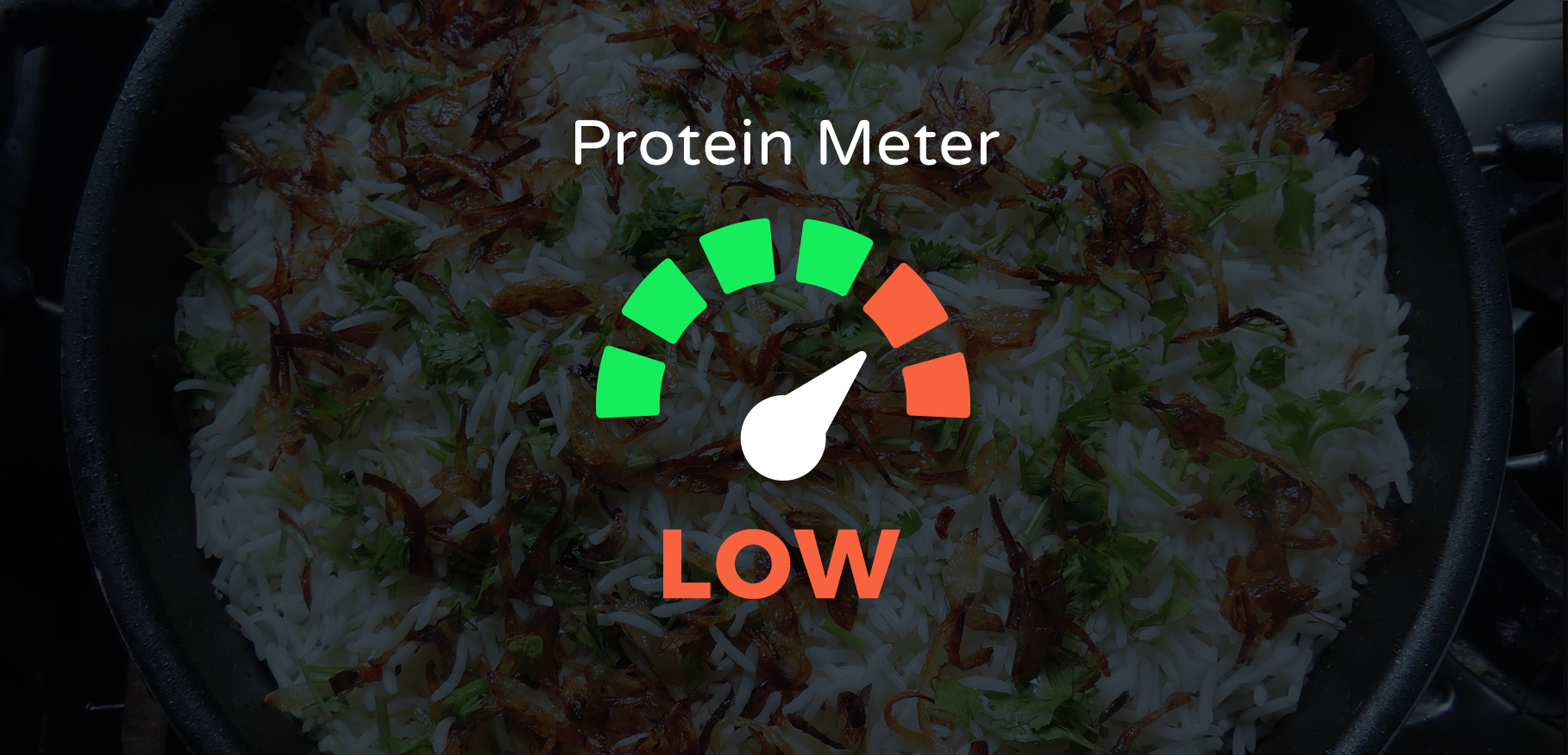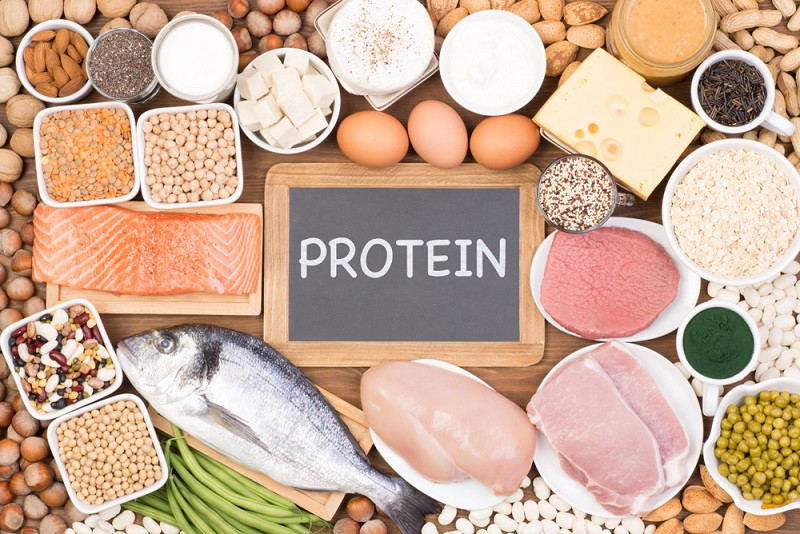Your protein needs:
The amount of protein you need in your
diet depends on your weight, age and health. As a rough guide, the recommended
dietary intake (RDI) for protein (measured in grams per kilogram of bodyweight)
is:
·
0.75 g/kg for adult women
·
0.84 g/kg for adult men
·
Around 1 g/kg for pregnant and
breastfeeding women, and for men and women over 70 years.
For example, a 75 kg adult male would need
63 g of protein per day. It is recommended that 15 to 25 per cent of total
energy intake per day is from protein sources. The human body can’t store
protein and will excrete any excess. Therefore, the most effective way of using
the daily protein requirement is to eat small amounts at every meal. Using the
example of the 75 kg male above, this would require that he eats approximately
21 g of protein at three meals each day.
The needs of children and adolescents also
vary according to their age and weight. A full list of recommendations for
dietary protein is available from the
Most Australians eat far more protein than
they actually need, so deficiencies are rare.
Sources of protein:
Some sources of dietary protein include:
·
lean meat, poultry and fish
·
eggs
·
dairy products like milk, yoghurt and
cheese
·
seeds and nuts
·
beans and legumes (such as lentils and
chickpeas)
·
soy products like tofu
·
some grain and cereal-based products are
also sources of protein, but are generally not as high in protein as meat and
meat alternative products.
The Australian Dietary Guidelines
recommend particular serves per day from the lean meat and poultry, fish, eggs,
tofu, nuts and seeds and legumes/beans food category, including:
·
men aged 19-50 years = 3 serves
·
men aged 51 years and over = 2 ½ serves
·
women aged 19-50 years = 2½ serves
·
women aged 51 years and over = 2 serves
·
pregnant women = 3 ½ serves
·
breastfeeding women = 2 ½ serves.
·
65 g cooked lean meats such as beef, lamb,
veal, pork, goat or kangaroo (about 90-100 g raw)
·
80 g cooked lean poultry such as chicken or
turkey (100 g raw)
·
100 g cooked fish fillet (about 115 g raw
weight) or one small can of fish
·
2 large eggs
·
1 cup (150 g) cooked dried beans, lentils,
chickpeas, split peas or canned beans (preferably with no added salt)
·
170 g tofu
·
30 g nuts, seeds, peanut or almond butter
or tahini or other nut or seed paste (no added salt).
The daily recommendations for adults for
foods from the milk, yoghurt, cheese and/or alternatives (mostly reduced fat)
group are:
·
men aged 19-70 years = 2 ½ serves
·
menu aged 70 years and over = 3 ½ serves
·
women aged 19-50 years = 2 ½ serves
·
women aged 51 years and over = 4 serves.
A serve could include either:
·
250 ml (1 cup) fresh, UHT long life,
reconstituted powdered milk or buttermilk
·
120 ml (1/2 cup) evaporated milk
·
200 g (3/4 cup or 1 small carton) yoghurt
·
40 g (2 slices) hard cheese such as cheddar
·
120 g (1/2 cup) ricotta cheese.
Amino acids explained:
The two broad classes of amino acids are
those that can be made by the human body (non-essential amino acids) and those
that must be supplied to us through our diet (essential amino acids).
Nutritional value of protein:
The nutritional value of a protein is
measured by the quantity of essential amino acids that it provides.
Different foods contain different amounts
of amino acids. Generally:
·
Animal products (such as chicken, beef or
fish) contain all of the essential amino acids.
 ·
Soy products, quinoa and the seed of a
leafy green called Amaranth (consumed in Asia and the Mediterranean) also
contain all of the essential amino acids. However, plant proteins usually lack
at least one amino acid.
·
Soy products, quinoa and the seed of a
leafy green called Amaranth (consumed in Asia and the Mediterranean) also
contain all of the essential amino acids. However, plant proteins usually lack
at least one amino acid.
People following a strict vegetarian or
vegan diet need to choose a variety of protein sources from a combination of
plant foods throughout the day to get an adequate mix of amino acids. For
example, a meal containing cereals and legumes, such as baked beans on toast,
provides all the essential amino acids found in a typical meat dish.
Digestion of proteins:
 A protein-rich food, such as meat, is
broken down into individual proteins by the gastric juices in your stomach.
Pancreatic enzymes released into the first portion of your small intestine
(duodenum) split the proteins into their separate amino acids. The amino acids
are absorbed by the small finger-like projections (villi) lining the intestine
walls, and are taken to the liver via the bloodstream.
A protein-rich food, such as meat, is
broken down into individual proteins by the gastric juices in your stomach.
Pancreatic enzymes released into the first portion of your small intestine
(duodenum) split the proteins into their separate amino acids. The amino acids
are absorbed by the small finger-like projections (villi) lining the intestine
walls, and are taken to the liver via the bloodstream.
How amino acids are used
The three main ways that the human body
uses amino acids include:
·
Protein synthesis –
new proteins are created constantly. For example, as old, dead cells are
sloughed off the skin surface, new ones are pushed up to replace them.
·
Precursors of other compounds –
a range of substances are created using amino acids, (for example, the brain
chemical (neurotransmitter) serotonin and the ‘fight or flight’ chemical
adrenalin).
·
Energy – although
carbohydrates are the body’s preferred fuel source, about 10 per cent of energy
is obtained from protein.
Ammonia – a toxic
byproduct of protein
One of the byproducts of protein
metabolism is ammonia. In high levels, ammonia is extremely dangerous to the
body and so is converted into urea. This water-soluble chemical is collected by
the kidneys and eliminated from the body in our urine. The more protein we eat
each day, in excess of our needs, the more work our kidneys must do to get rid
of the ammonia.
Beginning at approximately 50 years of age,
humans begin to gradually lose skeletal muscle. This loss is known as
sarcopenia, is common in the elderly, but is also worsened by chronic illness,
poor diet or inactivity. It is likely that protein intake at the upper end of
the RDI range can help maintain muscle mass and strength, which is vital for
walking ability and reducing the risk of injury in older people from falls.
It is also important for older people to
eat protein ‘effectively’, which means to consume high-quality protein foods,
such as lean meats.
Strenuous exercise and
protein needs
Contrary to popular belief, people who
exercise vigorously or are trying to put on muscle mass do not need to consume extra protein. Studies show that
weight-trainers who do not eat extra protein (either in food or protein
powders) still gain muscle at the same rate as weight-trainers who supplement
their diets with protein. A very high-protein diet can strain the kidneys and
liver, and prompt excessive loss of the mineral calcium.
Timing of protein
consumption
Soon after exercising (either resistance
or aerobic), it is recommended that you consume a high-quality protein source
(such as a glass of milk or tub of yoghurt) combined with a carbohydrate meal
to help maintain your body’s protein balance. Studies have shown this to be
beneficial, even when following low to moderate aerobic exercise (such as
walking), particularly for older adults.
Symptoms of protein
deficiency
As stated above, protein deficiencies in
Australia are not common, but may occur in people with special requirements,
such as older people. In particular, people following strict vegetarian or
vegan diets must make sure that they eat a wide range of plant proteins every day.
Symptoms of protein deficiency include:
·
wasting and shrinkage of muscle tissue
·
oedema (build-up of fluids, particularly in
the feet and ankles)
·
anaemia (the blood’s inability to deliver
sufficient oxygen to the cells, usually caused by dietary deficiencies such as
lack of iron)
·
slow growth (in children).
Very high protein diets
are dangerous
Some weight trainers and bodybuilders
believe that high-protein diets lead to increased muscle mass. High protein
diets promote intakes of protein of between 200 and 400 g per day, which
equates to approximately 5 g/kg each day (more than five times the RDI). This
belief is false. It is the stimulation of muscle tissue through exercise, not
extra dietary protein, which leads to muscle growth.
 The RDI for protein provides adequate
protein to build and repair muscles, even for body builders and athletes. Fad
diets that favour very high protein and fat intake, combined with very low
carbohydrate intake, may be harmful.
The RDI for protein provides adequate
protein to build and repair muscles, even for body builders and athletes. Fad
diets that favour very high protein and fat intake, combined with very low
carbohydrate intake, may be harmful.
Some of the problems with very high-protein
diets (more than 35 per cent of total daily intake) include that:
·
They usually promote a very low intake of
carbohydrates. Glucose, made when your body breaks down dietary carbohydrate,
is your body’s preferred fuel source. If your body does not receive enough
dietary carbohydrate, it will break down muscle tissue to make glucose. This
causes muscle wastage, reduced metabolism and a build-up of ketones.
·
Fibre is largely a carbohydrate. Foods rich
in carbohydrates (such as wholegrains and legumes) are also rich in fibre.
Avoiding these foods leads to an overall low-fibre intake, which can result in
constipation, bowel disorders and increased risk of colon cancer.
·
There is evidence to suggest that the heart
may not function as well if its main source of fuel is ketones.
·
High intake of animal products (which is
usually recommended in such diets) can also be high in saturated fats and
cholesterol, which is associated with a range of conditions including heart
disease.
·
The liver and kidneys are put under strain
because they have to detoxify and eliminate unusually high quantities of
protein byproducts. Kidney problems may be exacerbated in people with diabetes.
·
There is an increased risk of developing
gout and gall bladder colic.
·
Greater losses of body calcium may increase
the risk of osteoporosis.
·
High-protein diets can cause mild
dehydration due to increased water loss through urine. Increased risk of
dehydration puts the body under pressure.
·
Recent research shows that weight loss over
one year is not greater on a high-protein diet when compared to safer, low-fat
eating patterns.











0 Comments